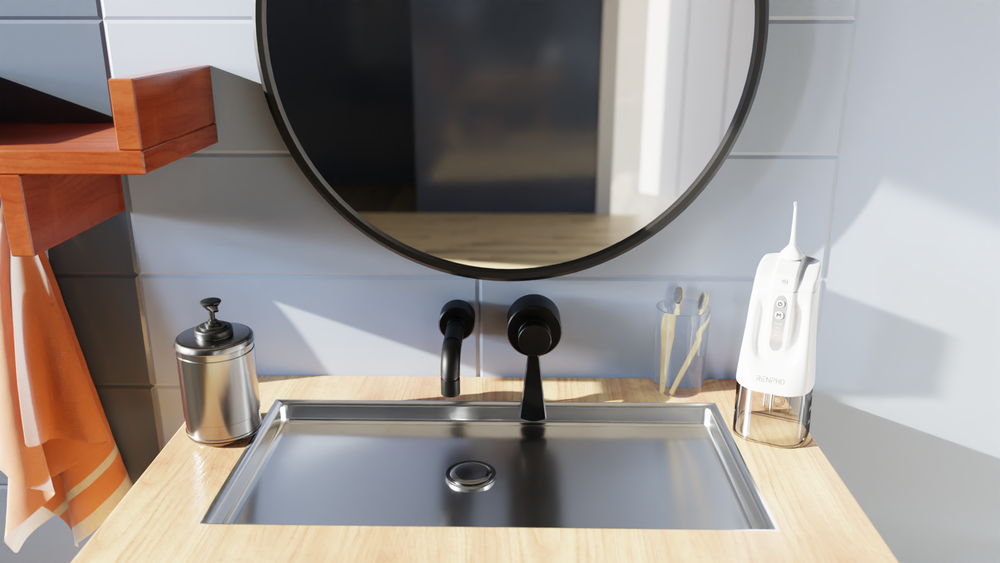Why You Need a Water Flosser This 2023

Stay tuned to our latest news
Oral health is one of the most important aspects of our overall well-being, especially if we’re talking about being presentable to others. If your work involves socializing with other people, having clean teeth and fresh breath is a must, as it can affect your overall performance.
While brushing your teeth and gargling with mouthwash are great at getting rid of bacteria and food particles, these are simply not enough. There will still be some residue that your toothbrush cannot reach, or your mouthwash cannot get rid of. This is where floss comes in handy.
Why Floss at All?
Flossing is a crucial component of daily dental hygiene that often gets overlooked. Brushing your teeth twice a day is crucial, but it may not be enough to fully remove plaque and food particles from between your teeth. This is where flossing comes in.
Flossing is the process of using a thin string of dental floss to clean between your teeth and along the gumline. It helps remove plaque and food debris that can lead to tooth decay and gum disease. These conditions can cause pain, tooth loss, and other oral health issues if left untreated.
Regular flossing is particularly effective in removing plaque, a sticky film of bacteria that forms on the teeth. The difference compared to toothbrushes is that dental floss can remove plaque in the areas between your teeth and other hard-to-reach places. Toothbrushes simply can't reach those areas where plaque often accumulates.
Incorporating daily flossing into your oral hygiene routine is essential. However, if you’re looking for an alternative to dental floss, consider using a water flosser to make this task easier and more effective.
What Are Water Flossers and What Do They Do?

Now what makes a water flosser an effective alternative to floss is its ease of use. By utilizing a stream of water to remove plaque and food debris stuck between your teeth and along the gumline, these innovative oral hygiene devices offer an easier method for people with dexterity issues or those seeking a more convenient and efficient way to maintain good oral health. The stream of water from a water flosser helps to flush out plaque and food particles that are often missed by toothbrushes and traditional floss. By incorporating a water flosser into your oral hygiene routine, you can enhance your overall dental health by reducing the risk of tooth decay, gum disease, and other oral health issues.
Water Flossing vs. Flossing: Which Is Better?You already know that when it comes to maintaining oral hygiene, regular flossing is essential. While traditional flossing with dental floss helps remove plaque, food particles, and bacteria from between teeth and along the gumline, a water flosser provides an alternative method that offers its own unique benefits. Traditional flossing requires manual dexterity and may cause discomfort for people with sensitive gums. Additionally, traditional flossing may be less effective in reaching all areas of the mouth, especially for those with dental implants or bridges. Water flossing, on the other hand, utilizes a stream of water to clean between teeth and along the gumline. Water flossers often come with adjustable pressure settings to suit individual needs. They are especially advantageous for people with dexterity issues or sensitive teeth. Water flossers can effectively remove food debris, reduce the risk of gum disease and tooth decay, and improve overall oral health. So, is water flossing better than traditional flossing? There’s no clear answer. Though research comparing the effectiveness of water flossers to traditional flossing is limited, some studies suggest that traditional flossing may have a slight advantage in reaching tight spaces. However, water flossers excel in cleaning hard-to-reach areas, making them an excellent addition to an oral hygiene routine. In conclusion, both water flossing and traditional flossing have their benefits and limitations. While traditional flossing may have an advantage in reaching tight spaces, water flossers offer advantages in terms of accessibility, ease of use, and suitability for individuals with dental implants or bridges. Incorporating both dental floss and water flosser into your oral hygiene routine can help leave your entire mouth feeling cleaner and more refreshed than if you choose one over the other. |
Benefits of Water Flossers
The benefits of flossing extend beyond just preventing tooth decay and gum disease. By removing plaque, flossing also reduces the risk of cavities, freshens breath, and promotes overall oral health. It helps keep your gums healthy by stimulating blood flow and preventing inflammation.
Water flossers offer numerous benefits for maintaining oral health and hygiene. These devices provide an alternative to traditional flossing methods and offer unique advantages. They utilize a stream of water to effectively clean your teeth and gums, making them particularly beneficial for individuals with sensitive gums or limited manual dexterity. Moreover, water flossers also reach areas that may be difficult to clean with traditional floss, making them ideal for people with dental implants or bridges. Water flossers can also help reduce the risk of gum disease and tooth decay, improve overall oral health, and promote healthier gums. While more research is needed to establish their superiority over traditional flossing, water flossers are a convenient and effective tool for maintaining optimal oral hygiene.
Is It Better to Brush Before or After Flossing?

The question of whether it is better to brush before or after flossing has been a topic of debate among oral hygiene enthusiasts. While some argue that brushing before flossing allows the toothpaste to reach the hard-to-reach areas between the teeth, others believe that flossing before brushing helps to dislodge food particles and plaque, making it easier for the toothbrush to clean.
Fortunately, the American Dental Association (ADA) have weighed in on the matter and their recommendations may surprise you. According to ADA, it doesn't matter whether you brush before or after flossing, so long as you do a thorough job.
So, whether you prefer to brush before or after flossing, the key is to ensure that you are giving your teeth and gums a thorough clean. Remember to brush for two minutes, using a soft-bristled toothbrush and fluoride toothpaste, and floss at least once a day to remove plaque and food debris.
Takeaway
Achieving and maintaining good oral health is a must. It doesn’t matter if your job requires you to socialize or not. Using a water flosser allows you to eliminate plaque and food particles in those hard-to-reach areas for cleaner teeth and gums. This innovative device offers a convenient and efficient solution for oral care, enabling you to elevate your dental hygiene practices, leading to a brighter, healthier smile and enhanced overall well-being.
Renpho Health Tips
-

The Best Foods to Eat Before a Morning Workout
November 2, 2023
Read more >
-

Love Desserts? 6 Healthy Boston Cream Recipes for Your Sweet Tooth
October 22, 2023
Read more >
-

Delectable Pasta Recipes That Will Satisfy Your Cravings
October 17, 2023
Read more >
-

8 Healthy Fall Recipe Ideas for Your Next Seasonal Party
October 16, 2023
Read more >
-

5 High Calorie Healthy Food Ideas for Weight Gain
October 16, 2023
Read more >





